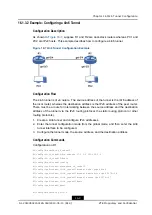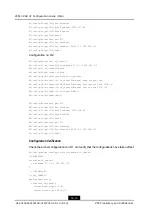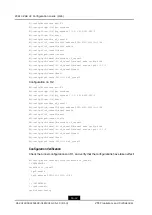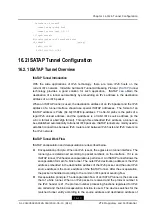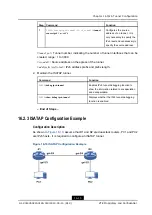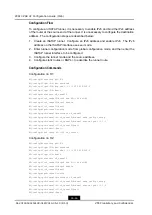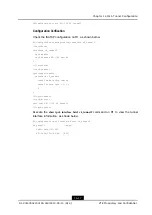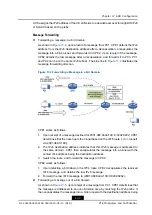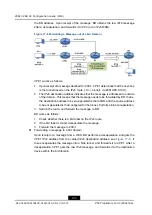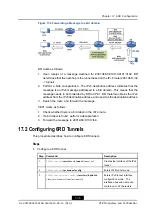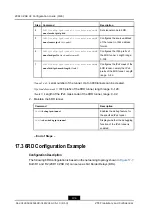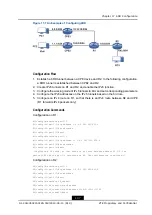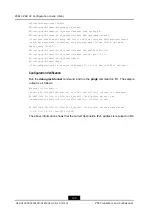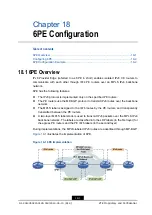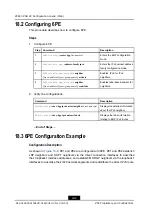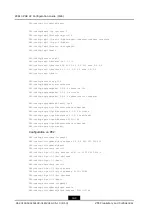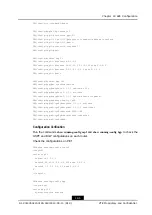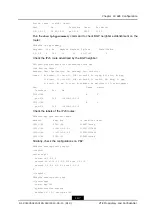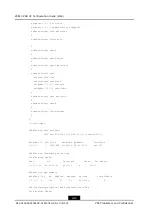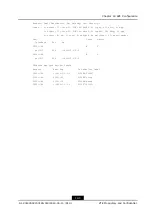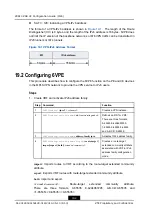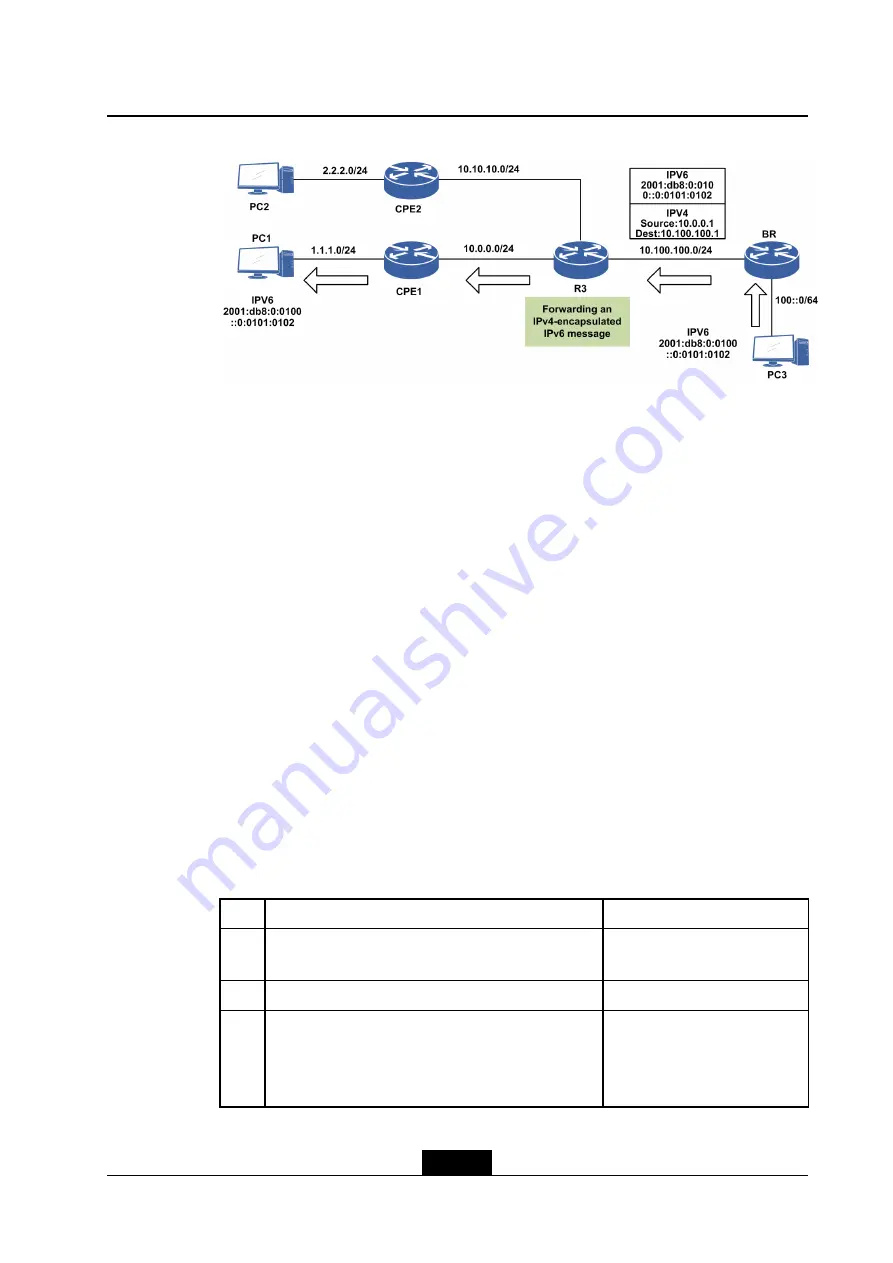
Chapter 17 6RD Configuration
Figure 17-6 Forwarding a Message to a 6rd domain
BR works as follows:
1.
Upon receipt of a message destined for 2001:db8:0:0100::0:0101:0102, BR
determines that the next-hop is the tunnel based on the IPv6 route (2001:db8::/32
-> tunnel).
2.
Perform a 6in4 encapsulation. The IPv6 destination address indicates that the
message is an IPv6 message addressed to a 6rd domain. This means that the
message needs to be forwarded by BR to CPE1. BR therefore obtains the IPv4
address from the IPv6 destination address, and uses it as the destination address.
3.
Search the route, and forward the message.
CEP1 works as follows:
1.
Check whether there is a 6rd label on the IPv4 route.
2.
If a 6rd label is found, perform a decapsulation.
3.
Forward the message to 2001:db8:0:100::/64.
17.2 Configuring 6RD Tunnels
This procedure describes how to configure 6RD tunnels.
Steps
1.
Configure a 6RD tunnel.
Step
Command
Description
1
ZXR10(config)#
interface v6_tunnel
<
tunnel_no
>
Creates the interface of the IPv6
tunnel.
2
ZXR10(config)#
ipv6-tunnel-config
Enters IPv6 tunnel mode.
3
ZXR10(config-ipv6-tunnel)#
interface
{
byname
<
interface-byname
>|<
interface-name
>}
Enters IPv6 tunnel interface
configuration mode. The
interface alias and name can
contain up to 32 characters.
17-5
SJ-20140504150128-018|2014-05-10 (R1.0)
ZTE Proprietary and Confidential

